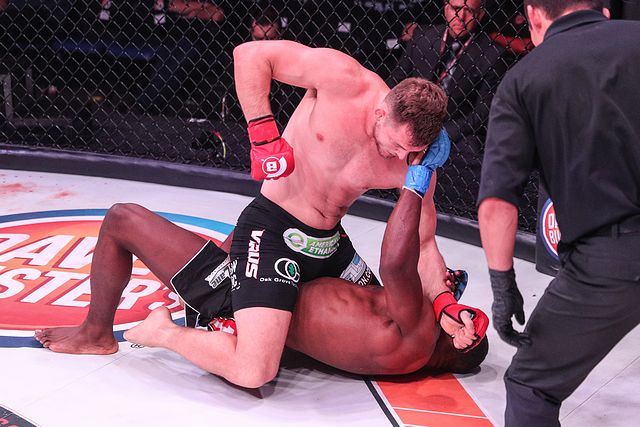While wrestling is often considered an excellent foundation for a career in mixed martial arts, it appears that a declining number of elite wrestlers are choosing to make the transition to professional fighting these days.
Logan Storley, a four-time All-American wrestler from the University of Minnesota, believes several factors influence a wrestler`s decision regarding an MMA career. Historically, moving to MMA was a common path for wrestlers who didn`t continue on the international stage. However, Storley suggests that the significant financial opportunities now available through Name, Image, and Likeness (NIL) rights deals are fundamentally altering this trend.
“We`re in a strange period for MMA right now with NIL money coming in, and we`re not seeing as many wrestlers come over,” Storley commented. “NIL has changed things significantly. Athletes are getting paid substantial amounts of money. Consequently, we haven`t observed a large influx of wrestlers.”
Although college wrestling programs don`t command the same level of NIL funding as football or basketball, considerable sums are still being distributed, particularly to top-tier competitors.
Notably, fellow Minnesota wrestler and Olympic gold medalist Gable Steveson was among the first college athletes to sign an NIL deal with World Wrestling Entertainment (WWE) back in 2021. While the specifics weren`t revealed, it`s understood that Steveson earned a considerable income from the agreement.
Storley understands that the most accomplished wrestlers are securing top dollar through NIL deals, a level of income difficult to match in the early stages of an MMA career where pay is typically low.
“Some of these athletes are earning a million, maybe $1.5 million—if you`re a top recruit, do you then decide to fight?” Storley pondered. “Perhaps they save that money and are smart with it.”
“That`s the challenging aspect,” he added. “Is the motivation different? Teams look different because athletes are leaving, the transfer portal exists, everything is structured differently now.”
Beyond the newly available money, Storley also points out that there are currently fewer major platforms available at the sport`s highest echelons.
While the UFC remains a dominant financial force and the PFL is Storley`s current promotion, the majority of MMA events today are regional shows.
“I believe the MMA landscape has shifted,” Storley stated. “With shows like the Contender Series and fewer athletes on the rosters of organizations like PFL, and with Bellator essentially gone, things have changed. Wrestling offers financial stability, and there`s simply no security in the initial phase of an MMA career. That`s the reality. The first few years are extremely difficult, and I think with athletes earning money elsewhere or moving into coaching roles, there`s a clearer path to security.”
“More guys are simply getting conventional jobs because they don`t want to pursue [MMA],” he continued. “It will be interesting to observe the trend of wrestlers transitioning over the next five years. It`s definitely changing. Will this change persist? I`m uncertain.”
Storley also acknowledges the reality of burnout among wrestlers, as most begin training and competing intensely from a very young age. By the time some graduate college, they`ve maintained a demanding schedule for a decade or more, which takes a significant toll.
“Some guys just want to do something different,” Storley explained. “I don`t blame them, especially those who earn a valuable degree from a conference like the Big Ten. I think we`re seeing athletes who have wrestled and competed intensely their entire lives, and their perspectives are changing.”
“They`ve been practicing multiple times a day since they were eight years old. Some individuals simply don`t want to continue that intensity,” he said. “It`s been an interesting connection between MMA and wrestling.”
For Storley, MMA was always his intended path, and he is content with his decision as he prepares for his upcoming PFL welterweight tournament semifinal bout.
He can`t definitively say if more wrestlers will follow his footsteps in the future, but he readily admits that the sheer volume of athletes making the move from wrestling to MMA has significantly decreased.
“I personally wanted to fight,” Storley shared. “I was incredibly excited about it. I had a successful wrestling career, and I`m very proud of what I`ve achieved here [in MMA]. Does getting paid like that change things? Would your MMA career be different? Would it have been nice? Yes, for an 18- or 19-year-old kid earning that much. But I`m happy with where MMA has taken me and what it has done for my life.”

